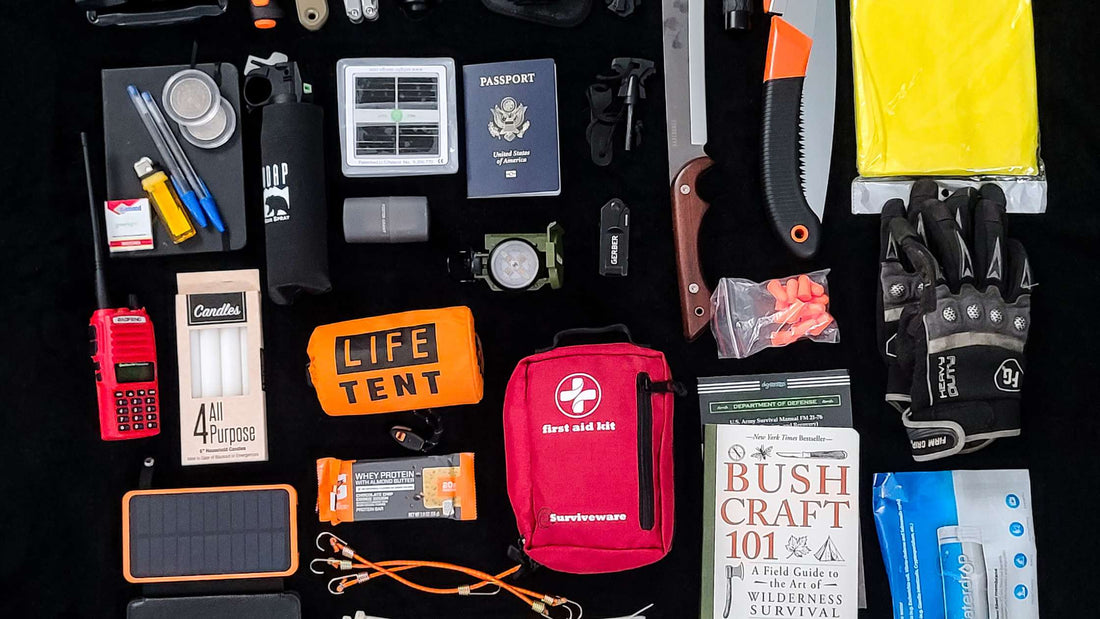Essential Emergency Kits for Home Preparedness

Building a Strong Emergency Kit: Why It Matters
You can’t predict emergencies, but you can prepare for them. Think of an emergency kit as your personal safety net, offering reassurance and resources when you’ll need them most.
Imagine this: a power outage, roads closed, help delayed—what do you grab first? That question alone might spark hesitation. But with a well-designed emergency kit, you’re ready to face life’s uncertainties with confidence and practical tools.
This guide aims to answer common concerns like, “What should my emergency kit include?” and “How can I tailor it to my family’s needs?” Let’s simplify the process, focusing on essential steps to build or enhance your kit.
What Are the Basic Items Every Emergency Kit Should Contain?
Water and Hydration Supplies:
Water is non-negotiable because staying hydrated is crucial during any emergency. You’ll want to have at least one gallon per person per day. For a basic emergency kit, aim for a minimum of three days' worth. If you have more room, think about adding water purification tablets or a small filtration system. These come in handy during long-term crises where your primary water supply might be compromised. Staying hydrated is about more than just comfort—it’s a necessity for survival.
Non-Perishable Food Items:
When hunger strikes during an emergency, lightweight, calorie-dense options like canned beans, granola bars, and vacuum-sealed meals are perfect. They’ll last long (3–5 years in many cases) and don’t require refrigeration. If you’re including canned goods, make sure to pack a manual can opener to access them easily. These simple items bring both nourishment and energy when you need them most.
First Aid Kit Essentials:
Your first aid kit is vital to handling any minor injuries or health issues quickly. Essentials should include:
- Bandages in various sizes
- Antiseptic wipes and ointments
- Sterile gauze pads and medical tape
- Tweezers and scissors
- Disposable gloves
- Over-the-counter pain relievers
- Prescription medications for anyone in your family
It’s not just about protecting wounds—it’s about peace of mind knowing you’re prepared for the unexpected.
Flashlights and Batteries:
When the power goes out, a dependable flashlight is your best friend. Pack an LED flashlight for the long-lasting light it provides and keep spare batteries handy. For emergencies where carrying extra batteries isn’t practical, a hand-crank flashlight works wonders. Include glow sticks as another versatile, hands-free light source.
Multi-Purpose Tools:
These tools are invaluable—think of them as your emergency “Swiss Army knife.” Look for one that has essentials like pliers, screwdrivers, a knife, and scissors. The more features it has without being bulky, the better equipped you’ll be to handle a variety of situations.
Emergency Blankets:
Compact yet effective, emergency foil blankets retain 90% of your body heat. They’re lightweight and take up almost no space in your emergency supply kit. Add one for every family member in your kit—it’s a small investment for such a powerful safety net against cold temperatures.
Personal Hygiene Items:
Staying clean can be difficult during prolonged emergencies, but hygiene is crucial for preventing illness. Include items like:
- Hand sanitizer
- Wet wipes
- Travel-sized soap and tissues
- Feminine hygiene products
- Small garbage bags for waste disposal
Even in chaos, maintaining your hygiene can make a huge difference in your comfort level and health.
Copies of Personal Documents:
Important documents like IDs, birth certificates, and insurance policies should be stored in waterproof sleeves. Having these on hand can make navigating government services or filing claims much easier in a crisis.
Battery-Powered Communication Tools:
An NOAA weather radio ensures you’re always in the loop about conditions like incoming storms or evacuation notices. A hand-crank or battery-powered radio is worth its weight in gold when communication systems go offline.
How Do You Customize an Emergency Kit for Specific Needs?
Children’s Supplies:
Children often require specialized items during emergencies. Diapers, baby wipes, formula, snacks, and comfort items like a favorite toy or blanket can help maintain a sense of normalcy. Emotional comfort is just as important as physical needs, especially for children in high-stress situations.
Pet Items:
Don’t forget about your four-legged family members. Pack enough food, water, and medications for three days. Items like a leash, waste bags, and vaccination documents can be lifesavers if you need to relocate your pet.
Medical Needs:
People dependent on medications like insulin, inhalers, or medical devices need extra preparation. Aim for a seven-day supply of essential medications stored in their original packaging.
Urban vs. Rural Settings:
In urban settings, space-saving items like compact water filters and multi-tools are ideal. For rural areas, where services may take longer to reach, more extensive supplies like portable stoves and durable water containers are a smart addition.
Adjusting for Seasonal Variance:
Tailor your kit depending on seasonal risks. For instance:
- Winter: Add thermal blankets and mittens.
- Summer: Include sunscreen and electrolyte tablets.
- Flood-prone areas: Think watertight containers and ponchos.
How Often Should an Emergency Kit Be Updated?
Updating your emergency kit ensures it’s effective when needed. I recommend setting aside a time every six months to:
- Rotate food and water.
- Check expiration dates on medications and first aid supplies.
- Test battery-powered devices.
- Replace outdated items or those you’ve borrowed.
Having a seamless schedule simplifies the upkeep process and ensures your kit is always ready to go.
What Are the Benefits of Having an Emergency Kit?
- Immediate Access: You save precious minutes by having all essentials in one spot.
- Reduced Stress: Knowing you’ve prepared in advance helps you stay calm and collected.
- Shelter Flexibility: Whether you shelter at home or evacuate quickly, you’ll have what you need.
- Self-Reliance: Rely less on emergency services that could take time to reach your area.
- Family and Pet Safety: Everyone under your roof, pets included, is protected.
What Types of Emergency Preparedness Kits Are Available?
Compact Car Kits:
Roadside emergencies can catch anyone off guard. Kits designed for vehicles often include jumper cables, road flares, and bottled water.
Bucket-Style Kits:
These are ideal for home storage. They’re watertight and hold bulkier items like food packs and medical supplies.
Combination Kits for Extended Readiness:
These kits combine 72-hour essentials with items that support longer-term survival, such as portable stoves and advanced first aid.
Best Practices for Storing and Maintaining Kits:
- Use a dry, cool location to prevent spoilage or wear. Avoid spots exposed to direct sunlight.
- Make kits quickly accessible near your main exit.
- Use waterproof containers to protect sensitive supplies like documents or electronics.
- Keep multiple kits: one at home, one in your car, and one at the workplace.
Whether it’s a rural evacuation or weathering a storm in your house, the right storage and readiness tactics help your kit be effective and reliable.
Strengthening Your Preparedness Plan
Creating and maintaining a reliable emergency kit is a critical step toward safeguarding you and your family’s safety.
By incorporating water, food, shelters, and medical essentials, you prepare for unpredictable conditions with greater confidence.
Regularly review and update kits to meet changing needs, ensuring optimal readiness for seasonal or life-altering events.
Whether in an urban setting, wilderness, or at home, customizing kits to specific scenarios improves effectiveness during crises.
Taking actionable steps toward preparation builds resilience, emphasizing the importance of proactive planning for unforeseen emergencies.
Citations:
https://si-paninstitutionalcollections-emergency-kit-survey.com https://texasready-disaster-supply-checklist.com https://georgia-emergency-management-agency-ready-kits.com https://tulane-university-public-health-emergency-essentials.com https://ncp.si.edu/sites/default/files/files/price-emergency-kits-survey-final-report.pdf https://texasready.gov/build-a-kit/disaster-supply-checklist.html https://libguides.usc.edu/writingguide/literaturereview https://publichealth.tulane.edu/blog/emergency-essentials/ https://gema.georgia.gov/ready-kit-checklist©copyright 2025,Ready Master, all rights reserved.
